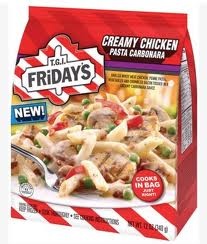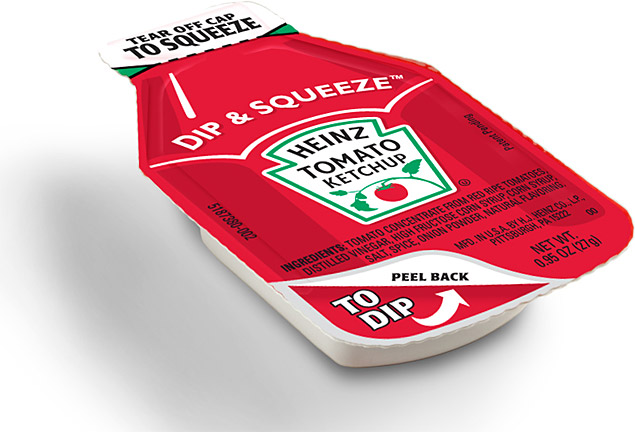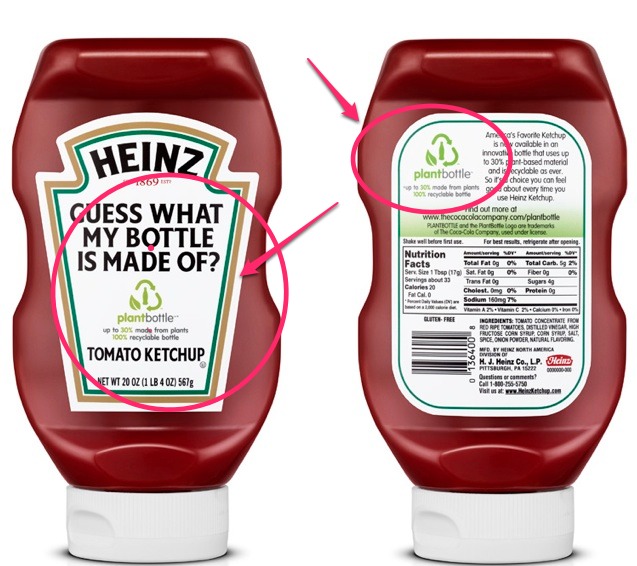“To do a common thing uncommonly well brings success.”
— Henry John Heinz, Founder

For an impressive body of work accentuated by the latest package introductions noted in this story, we are pleased to name Heinz as our Food Packager of the Year.
Heinz Co., Pittsburgh, is an iconic, $10.5 billion global food packager that remains “Hungry, humble and focused”—its three foundational tenets to innovation.
Overseeing the company’s alignment to these tenets as it continues on a fast track in package innovation are Jim Matthews, Group VP – R&D/Innovation, Heinz North America and Emerging Markets Capabilities; and Michael Okoroafor, Ph.D., VP, Global Packaging Innovation and Execution. What does innovation mean to Heinz and how does packaging fit in?
“Quite simply, we define innovation as turning new ideas into profit,” responds Matthews. “While innovation can be a high-tech solution, it also can be a straight-forward consumer insight based on thoughtful enhancement that can disrupt and grow a category.
“Packaging is a major part of creating value for our products.
Our R&D and packaging teams are tightly linked with our marketing teams.
A major part of my role is creating the culture, tools and talent that will allow Heinz to excel in the marketplace with value added, conve- nient, purposeful and sustainable packaging designs and enhancements. I judge our packaging team to be one of the best in the business, and an enabler to developing the strategic partnerships and results that help our businesses grow together.”
Okoroafor also sees packaging as an enabler, and also points out another critical focus: the consumer.
“There are a lot of insights that go into understanding consumer needs, desires and wants. That’s how we formulate our strategy for addressing innovation. We view technology as an enabler to get us to where the consumer wants us to be.
“Secondly, most of our packaging is designed to communicate to the consumer,” says Okoroafor, “and, in most cases, simplify the way our customers go to market.”
There’s a third crucial component in Okoroafor’s view. “We incorporate sustainable features into our packaging in the most environmentally friendly way possible. To quote our chairman [William Johnson], it’s a case of ‘doing well by doing good’.”

Listening and responding through innovation
Look no further than the thermoformed, packet-replacing Dip & Squeeze® foodservice ketchup packs as a prime example of what can result from listening to the consumer.
As the first transformational packaging innovation in the sachet foodservice industry in more than 40 years, Matthews believes that the Dip & Squeeze platform “really demonstrates the power of clear consumer and operator insights, intellectual property and affordable, intelligent design.”
Comprising a peelable lid applied to a small thermoform and resembling a small bottle, Dip & Squeeze allows consumers to either tear off the tip and squeeze the condiment out or peel back the lid from the bottom for dipping. The pack holds 27 grams of ketch- up (just short of a full ounce), about three times the amount of a standard foodservice packet.
“We listened to the consumer over the years regarding some of their concerns with our ketchup sachet packaging. We went to work and as science and material technologies improved, we were able to leverage that into what you see today,”says Okoroafor.
Besides the structural, materials and package de- sign aspects for Dip & Squeeze, the development had a considerable machinery side that itself took 16 months development. Working with Multivac (www. multivac.com), the result was “a robotics-driven packaging machine that’s the size of a football field,” says Okoroafor.
“It’s a fascinating piece of technology.”
The pack has proven such a hit that, last month, Heinz announced it was taking the concept into retail in 10-count cartons. It marks the first time a Heinz ketchup innovation developed for restau- rants has made the transition to store shelves.
Okoroafor points to sustainability-driven initiatives the company has championed as exemplifying “doing well by doing good.”
One of those is for bagged meals, such as those packaged at the company’s Pocatello, ID, facility.
Traditionally, frozen meals at Heinz were produced in trays made from crystallized PET (CPET). According to Okoroafor, going from CPET trays to bag meals uses approximately 80% less material [by weight] and offers multiple benefits to consumers, customers and the environment.
“The bag meal is very convenient, easy to transport, and easy to store in the refrigerator. And, from a merchandising perspective, our design is better than the competition because it sits better on the shelf.”
Matthews understandably also feels good about the development, though it’s also apparent that Heinz doesn’t take its foot off the accelerator even when it has a winner.
“It hits on all cylinders from a standpoint of taste, freshness, convenience and eventually sustainability as well,” he states, “but it’s an- other platform we are continually refining.
We are applying this technology to brands like T.G.I. Friday’s, Smart Ones, Ore-Ida and globally with infant feeding with great success.”

‘PlantBottling’ a winner
Another remarkable success story is Heinz’s unprecedented strategic partnership with the Coca-Cola Co. and its PlantBottleTM technology.
It’s yet another unique facet for this sustainability-conscious food packager to effectively leverage existing technology in a win-win arrangement.
Made from up to 30% renewable sugar cane ma- terial, the PlantBottle looks, feels and functions just like traditional PET plastic and is 100% recyclable. The PlantBottle runs exactly the same way in production and has the exact same shelf life as standard PET bottles.
“Absolutely no difference,” emphasizes Okoroafor, who possesses a doctorate in polymer science. From a technical standpoint, the 30% renewable content in PlantBottle is monoethylene glycol, the same material derived from petroleum sources.
Currently, all Heinz 20-ounce ketchup bottles are made from PlantBottle packaging. It’s the biggest change to Heinz’s iconic ketchup bottles since plastic bottles were introduced in 1983.
Okoroafor had been part of the team that developed the PlantBottle at Coca-Cola Co.
“Because the companies complement one another in several ways and have a long history of shared values, it was easy for us to work together,” says Okoroafor.
The company is collaborating with Coca-Cola Co. towards reaching 100% renewable content. “The other 70 percent is very challenging,” Okoroafor says. “You’re going to be hearing more from this partnership.”
It also exemplifies an approach Okoroafor defines as “leveraging ourself into prosperity, not inventing ourself into prosperity. Inventing a molecule that would substitute for PET is not our core competency. What we do best is meet consumer needs. That’s why people and companies like to grow with us.”
Heinz will produce 120 million PlantBottle packages in 2011.
This wasn’t Heinz’s first foray into a renewable platform. About six months before the PlantBottle partnership, it debuted Simply Heinz brand foodservice condiment packets that use 30% renewable materials as its launch into renewable packaging.
Even the standard PET bottle has been slimmed: The current Heinz ketchup bottle uses 20% less polymer than five years ago, according to Okoroafor. “We have constantly lightweighted to where it is very efficient.”
The company is also using recycled content into its packaging, which Okoroafor consider as very important and fits into the 4 Rs of Heinz sustainability: Re-use; reduce; recycle; renewable. “Depending on which product we’re delivering, we leverage some or all of these pillars,” he explains.
To what does Heinz attribute its successful track record?
“To grow, innovation must be sustainable in terms of new product success rates,” offers Matthews. “We leverage consumer insights at every step in the process. This ensures our investment in new products will pay out and generate an ongoing return.”
And that won’t stop, even against the backdrop of a sputtering economy where other companies have entrenched. “One thing I can tell you is that we haven’t stopped investing in packaging,” shares Okoroafor.
Managers seem to have taken the company Founder’s advice a step further by “doing an un- common thing uncommonly well” with some frequency. And that means that all the competition can do is try to play catch up.
Source : Food & packaging magazine by Rick Lingle
[ add comment ] ( 126 views ) | permalink |




 ( 3.1 / 2349 )
( 3.1 / 2349 )

 Calendar
Calendar